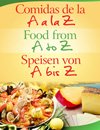|
To be fair, any seafood restaurant along the Menorcan coast can provide you with the traditional lobster stew, as well as other food and drink, but Fornells is an especially charming fishing village. Here you can enjoy this delicacy in one of the special restaurants in the bay, on its terraza or outside terrace, overlooking the sea with its fantastic views. Lobster is the basis for this delicious stew which is similar to a French fish stew, the bouillabaisse. Many of the restaurants keep their lobsters on display in large fish tanks and you can choose the one you like most for your dish. In order to establish if the lobsters are fresh they should be lifted up by their front claws to see if they move their tail energetically. If they do not, they are not fresh lobsters! Fish Dishes Lobster should not be allowed to eclipse Menorca's other fish and seafood dishes which also deserve a special mention. Menorca is an island surrounded by the warm sea so it is obvious that it provides a variety of fish and seafood. The result is that Mediterranean fish and seafood reaches Menorcan restaurants fresh and full of flavour and adds to the unique nature of Menorcan Food and Drink. Menorcan Meats Meat and meat products served in restaurants, tend to come from traditional Menorcan farms, known as llocs. These are characterised by their extensive fields for grazing and breeding. Menorcan calves, Menorcan lambs, a first-class breed of pig, plus various types of fowl such as chickens, capons and turkeys can all be obtained locally. Menorcan Cheese Menorcan Cheese has now established itself internationally. Maó cheese (originally from Alaior) is made from cow's milk, unlike Mallorcan cheese which uses goat's milk. Its popularity began to increase with the increase in cattle breeding, mainly Friesian cows, and to the large production of milk which was obtained. Nowadays most of the production is mechanised, however this cheese is still made the traditional way using the old methods. The milk is curdled using herbs, wrapped in a very fine white cloth and moulded into shape by hand until it becomes compact. Maó Cheese comes in several varieties depending on the maturation process, with different aromas and flavours. The maturing period of the mild cheese ("queso tierno") fluctuates between 21 and 60 days. It is a yellowish colour, with an aroma which reminds one of butter and has a slightly acidic flavour. If the maturing period is longer, the cheese is known as mature cheese ("queso curado"), much harder and with a more intense flavour. It is also made preserved in olive oil, giving rise to an exquisite product. By the way ... queso is the Spanish (Castillian) word for cheese. The Menorcan word is formatge. Menorcan Puddings Menorcans have a very sweet tooth. This has led to the development of a vast array of pastries and desserts.  You should at least try the almond macaroons ("carquinyols"), small sweets of 0.5 cm high square pastries, typical of Es Mercadal. or have an ensaimada with your morning coffee. This fluffy spiral pastry is made with flour, lard and sugar.
You should at least try the almond macaroons ("carquinyols"), small sweets of 0.5 cm high square pastries, typical of Es Mercadal. or have an ensaimada with your morning coffee. This fluffy spiral pastry is made with flour, lard and sugar.Menorca also used to have its own ice cream called La Menorquina and orginally came from Alaior. It is now being manufactured and marketed by an international concern. Menorca's culinary diversity in food and drink is expressed in a huge range of fish, shell-fish and meat recipes. Menorcan wines Menorca has an age old tradition of wine-making. This tradition was interrupted at the end of British rule and on a number of other occasions. In recent years vineyards have begun to cultivate different varieties of grapes and open wine cellars boosting an old tradition with new vigour. Currently there are four wineries and their associated vineyards on Menorca:
Since 2010, Menorca also has its own beer, the Illa. |

A Natural Paradise








